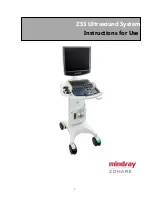
Page 14 Leica EM TIC 3X Operating Manual 07/17
Operator
Personnel with technical training, able to perform simple tasks, i.e., operate the Leica
EM TIC 3X Triple Ion Beam Cutter system and load / unload samples.
Administrator
Staff with technical training, able to perform the tasks of qualification 2, and also
typical simple maintenance, adjustment and start-up activities with protective devices
switched off as well as restarting the system.
Manufacturer's service technician
Trained technician provided by the Leica representative, who is able to carry out
more complex work in exceptional situations or in cases where such has been
agreed with the user.
2.9.6 Residual hazards
The Leica EM TIC 3X Triple Ion Beam Cutter system represents the latest technology
and conforms to recognized safety regulations: even so, hazards still exist.
If the Leica EM TIC 3X Triple Ion Beam Cutter system is damaged or malfunctioning,
all use of the system should be suspended until the malfunction or damage has been
corrected.
All modifications and conversions to the system are prohibited and leads to exclusion
of guarantee!
2.9.7 Emergency procedure
If unusual operating conditions or unaccustomed noises occur, the system must be
switched off using the main switch on the system if necessary.
If firefighting measures are called for, a CO
2
fire extinguisher must be used.
The Technical Service must be consulted before resuming work with the system.
2.9.8 Liquid Nitrogen (LN
2
) used for the cooling stage (optional)
The volume of the LN
2
Dewar is 25 l. When working with liquid nitrogen (LN
2
) please
bear in mind LN
2
is extremely cold. It boils at -196 °C. Nitrogen gas (GN
2
) escapes at
very low temperature from the boiling LN
2
. Both LN
2
and GN
2
as well as cooled
elements (e.g. pipes, valves, hoses, containers or stoppers) can cause severe frost
bite and burns to the skin and eyes.
When LN
2
evaporates, it expands in a ratio of 1:700. 1 litre LN
2
produces almost 1 m
3
of GN
2
. Care should therefore be taken to ensure that when large quantities of
nitrogen evaporate (e.g. when transferring LN
2
), the room should always be well
ventilated.
















































